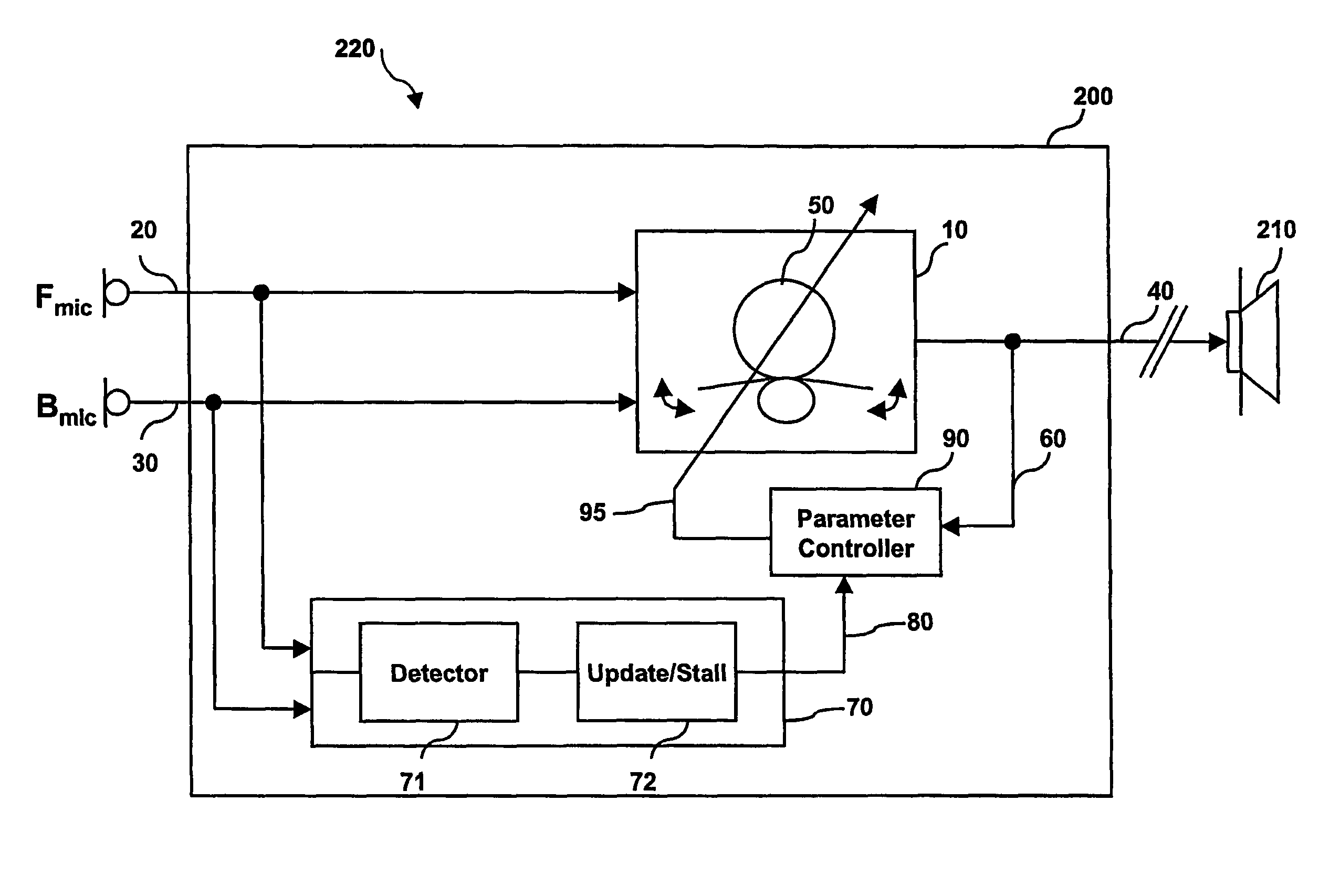Method for controlling the directionality of the sound receiving characteristic of a hearing aid and a signal processing apparatus
a signal processing apparatus and directionality technology, applied in the field of hearing aids, can solve the problems of affecting the sound reception characteristic of the hearing aid, and increasing the microphone noise, so as to minimize the output signal with the risk of suppressing the speaker, minimize the microphone noise, and maintain the effect of low nois
- Summary
- Abstract
- Description
- Claims
- Application Information
AI Technical Summary
Benefits of technology
Problems solved by technology
Method used
Image
Examples
Embodiment Construction
[0049]The present invention will now be described with reference to the accompanying drawings.
[0050]FIG. 1 depicts a block diagram of a signal processing apparatus 100 suitable for a hearing aid with a controllable directional characteristic and for practicing methods and implementing a system, consistent with an embodiment of the present invention. The signal processing apparatus 100 comprises a directional controller 10 which receives first and second microphone signals 20, 30 and outputs output signal 40. First and second microphone signals may submitted by a first (front) microphone Fmic and a second (back) microphone Bmic directly, or via preprocessing function, e.g. a filter function. The output signal 40 may be used as an input signal for a signal processor of the hearing aid for further processing and amplifying the output signal and submitting signals output from said signal processor to an output transducer, e.g. a loudspeaker, for emission of sound signals (not shown in F...
PUM
 Login to View More
Login to View More Abstract
Description
Claims
Application Information
 Login to View More
Login to View More - R&D
- Intellectual Property
- Life Sciences
- Materials
- Tech Scout
- Unparalleled Data Quality
- Higher Quality Content
- 60% Fewer Hallucinations
Browse by: Latest US Patents, China's latest patents, Technical Efficacy Thesaurus, Application Domain, Technology Topic, Popular Technical Reports.
© 2025 PatSnap. All rights reserved.Legal|Privacy policy|Modern Slavery Act Transparency Statement|Sitemap|About US| Contact US: help@patsnap.com



